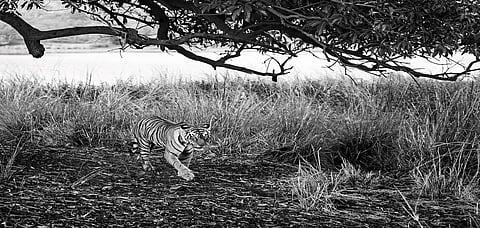
- Destinations
- Experiences
- Stay
- What's new
- Editor’s Picks
- Responsible Tourism
- CampaignsCampaigns
- Subscribe

My day starts at Ranthambore at 4am. I wake up, usually before the alarm goes off. I still keep it, though. You never know when it will come in handy. It&rsquos dark outside, but you can faintly hear the hustle and bustle of everyone&rsquos morning pre-safari ritual. Sometimes I play some light music as I get ready. I like jazz. I put on my lucky cap and check to see if all my gear is in place.
As I pack each piece of equipment carefully into my camera case, I think about ways to challenge myself. Might carry a different set of lenses, perhaps something wider to include some of the habitat in the image. I think my 35mm and 58mm Nikon lenses would be a good choice.
Like many, I was smitten by the camera at the first go, and the desire to capture mystical portraits of tigers in their full glory took me into the woods. But the jungle soon cast its spell upon me, and what started as an art project became the story of Hamir. The anger in his snarl and the innocence of his stare soon emancipated me from the boundaries of an artist and catapulted me into the realm of devotion, storytelling and, to be honest, love.
In my journey as a photographer, Hamir has taught me a lot. A perfect photograph is a story
in itself it starts with an idea, builds into vivid imagination but soon takes a life of its own. The subject, dead or living, speaks to the photographer and the result is a child of this union, literally breathing and alive. Hamir&mdashThe Fallen Prince of Ranthambore is a form of art that betrays a lot of conventions.
